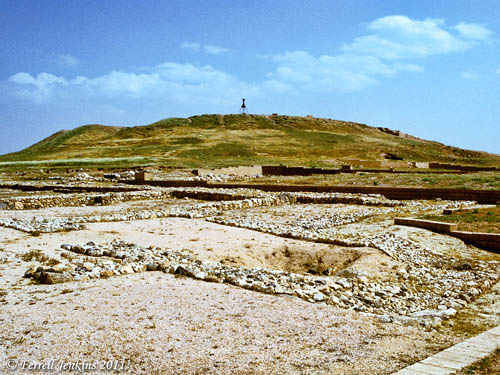Ebla and the Ebla Tablets
The Ebla tablets were discovered by an Italian team of excavators at Tell Mardikh in Syria (about 30 miles S of Aleppo) in 1975. More than 17,000 cuneiform tablets were discovered. They date to the mid-third millennium B.C. when Ebla was the capital of a great Canaanite empire. Scholars state that there are important affinities between the Eblaite language and biblical Hebrew, both being members of the Northwest Semitic family.
Numerous articles have appeared in the popular press and in scholarly journals stating that the names of Sodom and Gomorrah appear in the Ebla tablets. At one point it was even being said that all five cities of the plain (Gen. 14), and perhaps the name of one of the kings, were mentioned in the tablets. Much controversy has surrounded this discussion. Infighting between the excavator (Paolo Matthiae), the epigrapher (Giovanni Pettinato), and other scholars, along with some political implications, clouded the whole issue.
The late Mitchell Dahood (died 1982), an expert in Ugaritic literature, claimed that the cities of Sodom and Zeboim “may have counterparts” in the Ebla tablets (Giovanni Pettinato, The Archives of Ebla, 287). Pettinato was the first to read and interpret tablets from the Ebla archives and the first to identify the Northwest Semitic language in which they are written. Paolo Matthiae, the archaeologist, says the rumors that there is proof of the historical accuracy of the Bible patriarchs, references to Sodom and Gomorrah, etc. “are tales without foundation” (Ebla: An Empire Rediscovered, 11). One scholar states, “the initial enthusiasm about the light the tablets would shed on the early stages of biblical culture is now mostly seen as exaggerated. Clearly, no biblical personages can be identified in the tablets … ” (Harper’s Bible Dictionary, [1985] 235). Dahood, in the Afterword of Pettinato’s book, commented on the pessimism of one university professor with this classic put down:
How a savant can determine how relevant to the Bible a new discovery may be before the tablets have been published must remain a mystery. (Pettinato, The Archives of Ebla, 273).
Dahood says that the people of Ebla spoke a dialect of Canaanite and that their principal god was Dagan the Canaanite or the Lord of Canaan. This indicates that Canaan extended much further north than previously thought (Pettinato, 272). Dahood cites several biblical passages in which he believes a parallel exists between the Hebrew and Eblaite words (271-321). Numerous names in Genesis find parallel in the Ebla tablets. I had the opportunity to hear Dahood speak on this subject at a professional meeting in Dallas years ago.
At this point scholars are not agreed on the proper reading of some of the Eblaite words. Perhaps in time we will know more about this. For the present we must wait patiently. Numerous articles about Ebla have appeared in Biblical Archaeologist and Biblical Archaeology Review, as well as other journals.
Word comes regarding the death of Professor Giovanni Pettinato at the age of 77. Details here. HT: Bible Places Blog.



No comments:
Post a Comment